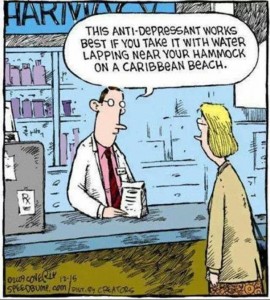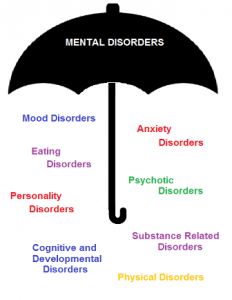
Today I blog on my publisher’s website about Why Host a Book Launch?

Today I blog on my publisher’s website about Why Host a Book Launch?
I enjoyed my weekend trip to Wordbridge, Lethbridge’s inaugural writers’ conference. Eighty-five people attended, a good turnout for a new event held in a small city. I met a few new people, spent time with others I’d met before, and found I liked the intimate atmosphere of the conference. Congratulations to all the organizers. Cheer’s to a second conference next year – in warmer weather!
“Psychiatry enables us to correct our faults by confessing our parents’ shortcomings.” (Laurence Peter)
Jeffrey A. Liberman includes this tongue-in-cheek quote in his book Shrinks: The Untold Story of Psychiatry. Published in 2015, Shrinks comes with Liberman’s strong credentials: Chairman of Psychiatry at Columbia University; Director of the New York Psychiatric Institute.
 Shrinks begins with a reference to the profession’s ongoing tension between nature and nurture; the swings between the belief that mental illness is entirely in the mind and the belief that is in the brain. We must embrace both, Liberman says.
Shrinks begins with a reference to the profession’s ongoing tension between nature and nurture; the swings between the belief that mental illness is entirely in the mind and the belief that is in the brain. We must embrace both, Liberman says.
Shrinks continues with the history of psychiatry. An early practioner, Mesmer, believed the cure for mental illness was inducing crisis. He tried to provoke fits of madness in the psychotically ill and bring depressives to the brink of suicide.
Liberman calls Sigmund Freud a tragic visionary, far ahead of his time. Freud’s theories of conflicts between unconsious mechanisms defined mental illness. But Freud’s controlling ways alienated his followers and his theories and methods were unscientific and rigid.
The profession wanted a more solid, medical footing, especially after the anti-psychiatry attacks of the 1960s and 70s.
The popular and acclaimed 1975 movie One Flew Over the Cuckoo’s Nest captured the public view of the psychiatric profession as morally and scientifically bankrupt. Liberman doesn’t say this, but I suspect Cuckoo’s Nest played a role in the temporary abandonment of Electroconvulsive therapy (aka Shock Therapy), shown so gruesomely and cruelly in the film. ECT is back with us now as a treatment for depression when medication and/or therapy fail. 
Liberman takes us through the drama of the DSM III, released in 1979. Before reading Shrinks, I was only vaguely aware of The Diagnostic and Statistical Manual (DSM), called the bible of psychiatry. The DSM is periodically revised and 2013 welcomed the fifth release. But the big change occurred with release # 3, which drove the nail into Freudian psychoanalysis by defining mental illness by symptoms and courses of the illnesses, rather than by causes.
DSMs 4 & 5 made some minor changes, which included adding the only two disorders currently defined by cause: Post Traumatic Stress Disorder (PTSD) and Substance Abuse.
After reading about the debate, I can see why the DSM definitions matter. Either a disease’s root cause is of vital importance to treatment or its cause is less important than its symptoms. Something is labelled a disease or not. Notoriously, homosexuality was a disorder in the original DSM.
Historically, Liberman says, biological and pschyodynamic theories of mental illness have fared equally well and, today, most psychiatrists address both. From my other readings, though, I get the sense the balance is weighted on the biological side, although the public probably leans stronger toward the biological view than professionals. Liberman might not see it so weighted because, despite his initial admiration for Freud, he seems to have landed closer to the biological argument and prescribes medication as a front-line treatment. This isn’t surprising when his speciality is therapy-resistant schizophrenia.
Shrinks struck me as a knowledgeable book written by someone high up in the mainstream of the psychiatric profession, presenting a more conventional view than the authors whose books I reviewed earlier this month.
Catherine Ford’s Opinion column in today’s Calgary Herald newspaper reminded me of a radical book on mental health treatment that I read two years ago. Here’s the review of the book, which I posted at that time.
At 450 pages, Brain-Disabling Treatments in Psychiatry: Drugs, Electroshock and the Psychopharmaceutical Complex by Peter R. Breggin, MD is a big book. It’s not an easy read, which you might guess from the technical-sounding title. Breggin states at the start that his book is aimed at professionals, although he hopes it’s clear enough for non-professionals to understand. Partly for these reasons, I only read the first and last sections, along with the brief conclusions Breggin sometimes offered in the middle sections. This was still enough to convince me that of all the professional psychology books I’ve read and am reviewing this month, Brain-Disabling…is the most exciting, and the one that did the most to change my thinking on mental health treatment.
 Breggin, age 79, has been a practicing psychiatrist in upstate New York for over 40 years. He claims he has never prescribed medication and has never lost a person to suicide. He disagrees with the biological model for mental illness and avoids labels such as schizophrenia and bipolar disorder. His approach is to listen to a patient’s life story. That is, to treat him or her as a person and not as a problem to fix.
Breggin, age 79, has been a practicing psychiatrist in upstate New York for over 40 years. He claims he has never prescribed medication and has never lost a person to suicide. He disagrees with the biological model for mental illness and avoids labels such as schizophrenia and bipolar disorder. His approach is to listen to a patient’s life story. That is, to treat him or her as a person and not as a problem to fix.
The part that threw me the most is his belief that psychiatric drugs are not only ineffective, they are harmful and work against recovery by impairing mental and emotional function. People’s belief these medications are helping them are due to the drugs’ spellbinding effect, much like the belief that you are witty and in control when you’re drunk.
The large middle section of Breggin’s book is devoted to proving his point for each current treatment, including psychotropic drugs, Electro Convulsive Therapy (ECT or Shock Therapy) and the medications for Attention Deficit Disorder. He especially opposes the current treatment of children for ADD/ADHD and depression. He claims there is an upsurge in diagnoses for bipolar disorder today because antidepressants have caused mania in people, who are then told by their psychiatrists that the treatment has unearthed this underlying condition.
I don’t feel qualified enough to know if his arguments against these treatments are solid or not. This is a second reason I skipped over the book’s middle. A third is that I don’t need his detailed arguments to be convinced, since I favour the nurture over nature view of mental illness and can easily accept a critique of medication. Breggin states that even if it is one day proven that some disorders are due to chemical imbalances — and there is no proof for this so far — our current drugs and shock therapy aren’t the way to go.
His extreme views made me Google him to find out if he’s a Scientologist, since they are notoriously opposed to modern psychiatry and its treatments. Breggin was associated with Scientology in the early 1970s. He wasn’t a member, although his wife was. Breggin broke with the the Scientologists partly because they opposed her marriage to an outsider. No doubt Scientology’s views on psychotropic medication were an attraction for him and the religion might have influenced, or at least reinforced, his thinking. Pharmaceutical companies have accused Breggin of being a Scientiologist to discredit him because he has been an expert witness in lawsuits against their products and vocal in his opposition to them.
Breggin wrote a defense of Tom Cruise’s rants on TV against psychiatry and medication. “The media would have liked to attack Tom on the grounds that he’s a Scientologist,” Breggin says. “Scientologists seem to share a number of views about psychiatry with me, including everything Tom said. In fact, I’d go further. Modern biological psychiatry is a materialistic religion masquerading as a science.”
Breggin’s credentials and clinical experience make it hard to dismiss him as a quack.  I was moved by the final section of his book, where he outlines his 20 tips for an empathetic psychiatry. He notes these guidelines could also be used in our everyday lives with colleagues and friends, and insists they have worked in his psychiatric practice, even with the most difficult and psychotic cases.
I was moved by the final section of his book, where he outlines his 20 tips for an empathetic psychiatry. He notes these guidelines could also be used in our everyday lives with colleagues and friends, and insists they have worked in his psychiatric practice, even with the most difficult and psychotic cases.
Psychosis, he says, is a “loss of connectedness to other human beings. The individual who withdraws into a fearful, self-protective, irrational fantasy responds best to being treated with kindness, respect, and the gradual building of rapport.”
It seems naïve and too simple, but could it work?
These findings are from a blog post I wrote two years ago, but the situation probably hasn’t changed much since then. 
On the internet, I found pages of information about mental illness, including this commonly quoted statistic:
One in five Canadians has a lifetime chance of mental illness, according to The Mood Disorders Society of Canada. 10.4 % of Canadians are experiencing a mental illness at any given time. This jibes with statements that one in ten Americans are taking antidepressants, the most prescribed medication in the USA. World-wide, depression is the leading cause of disability.
Other information surprised me:
Today’s antidepressants are no more effective than their counterparts in the 1970s, despite the billions spent on research and development during the past forty years. The newer drugs simply have fewer side effects, which makes people more inclined to continue taking them. Drug treatment is still hit and miss. No one really knows why antidepressants work. Many question if they work at all. A 2011 study published in the Journal of the American Medical Association found that, while meds appear to benefit severe depression (about 1/3 of cases), for mild to moderate depression they are no more effective than placebos.
Evidence suggests that some kinds of therapy, notably Cognitive Therapy, work better than medication, especially for preventing relapse. Therapy combined with medication works best.
The rate of relapse for severe depression is 50-90 percent, depending on which website you read, with a lifetime average of four episodes per person.
Scans show that depressed brains look different than normal ones. It’s unknown if this altered brain chemistry causes depression or is an effect of it.
Is mental illness caused by biological, psychological, environmental or other facters, or a combination of these? The debate continues.
This preliminary research made me want to dig deeper, so I went to my library website and put holds on books about psychology and psychiatry that seemed relevant. Most of these books took me through the history of psychiatric treatment, which has been with us for less than two hundred years. They also provided different opinions on current treatments. Extremely different opinions in some cases. Which led the blog post reviews that I’m re-posting this February Psychology month.
Since the Government of Canada has established February as Psychology Month, I’ve decided to re-run my blog post reviews of psychology books, from two years ago. I’m finding it interesting to revisit the messages in these books. Here’s the first review:
Inside the Mental: Silence, Stigma, Psychiatry, and LSD by Kay Parley. 
At 179 pages and not much larger than my hand, Inside the Mental offers an inside look at mental health treatment in Canada during the 1950s and 60s. In 1948, Kay Parley suffered a breakdown as a student at Lorne Greene’s Academy of Radio Arts in Toronto. She was admitted to the Weyburn Mental Hospital in her home province of Saskatchewan. The Weyburn was home to her in other ways, since her father and grandfather were long-term residents at the hospital. During her stay, Parley only saw them briefly due to the numbers of patients and wards and her doctor’s concern that meeting them could be disturbing.
Parley spent nine months in the Weyburn as a psychiatric patient. Today, she might not have been admitted at all. She wasn’t a threat to others or herself and, by her own account, was reasonably functional. She worked on the hospital newsletter and participated in drama activities. Upon release, she went on to a productive life with breakdowns every six years but no further hospitalizations. Parley was initially diagnosed as schizophrenic, although she says she might be bipolar or something else. In her view, the label doesn’t matter. She eschews treatment with medication, since her doctors at the Weyburn taught her to work through her problems.
The book’s big surprise for me was the enlightened treatment she received. Far from One Flew Over the Cuckoo’s Nest, most of the hospital staff showed the patients’ respect and a measure of equality. The Weyburn came across to me as less a prison and more a community that allowed people to thrive in a protective environment. This was misleading, as in the last chapter Parley states that life there was terrible for the majority of residents, who were deemed untreatable. Yet, her grandfather had an occupation as a hat-maker and she admits long-term patients able to work in the garden or other areas didn’t have it so bad.
During the 1960s, the Weyburn got into experimenting with LSD as a treatment for mental illness. Parley, now a nurse, became a regular sitter for those given LSD in the controlled environment. She says the drugs they used were purer than the later street forms. As often as not, the experimenters were hospital staff who viewed LSD as a way to understand their patients. Parley doubts that acid trips mimic schizophrenia, as LSD hallucinations tend to be more visual than auditory, but she feels LSD opened the staff’s minds to other consciousness. She believes these treatments worked especially well for alcoholics and might still be useful for treating addictions.
Inside the Mental challenges an assumption that medical treatment always represents progress. While reading this book, I found myself constantly wondering if today’s mental health treatment is better or worse than it was 60 years ago. It’s sad to realize I can’t answer that question. Parley’s book challenges us to not assume we’re on an improved track and to look at other possibilities.

Two-three years ago I read eight books on modern psychology as research for my novel, To Catch a Fox. I posted reviews of the books on my blog and now hate to see all that effort lost in cyberspace. Since the Government of Canada has established February as Psychology Month, I’ve decided to re-run my posts this month, with the odd updated tweak here and there. I’m finding it interesting to revisit the messages in these books. Here’s the first of the rebooted series:
I began my readings about modern psychology/psychiatry with Psychiatry: A Very Short Introduction by Tom Burns (Oxford Press 2006). The book is short, to the point and provides a good overview for not too much reading effort.
Burns’ introduction spoke to me when he remarked on the current preference to say that psychiatry is “just another branch of medicine.” The goal of such statements, he says, is to raise the status of the profession and reduce the stigma of mental illness. The problem is, psychiatry is different. There are real differences between mental and physical illnesses that won’t go away simply because we want them to.
In Chapter One ‘What is Psychiatry?’ Burns points out that psyche is the Greek word for mind (It’s also the Greek word for ‘soul’ or ‘breath of life’).
While the ancients pondered psychology (human thought and behaviour), the profession of psychiatry developed in the late 19th century with Sigmund Freud’s treatment of neurotic disorders, which he believed were caused by repressed unconsious thoughts.
Freud’s theories contributed much to twentieth century thinking — we still use the term Freudian slip, but his method of psychoanalysis has become increasingly marginalized in modern psychiatric practice. Today’s approach favours quicker and cheaper therapies that work at changing behaviours, with no need to understand underlying issues. Cognitive Therapy, with it’s goal of changing thinking, falls between behavioural and psychotherapy and has become one of the most successful and widely practiced therapies today. For better or worse, many turn to the self-help movement, a modern outgrowth of psychotherapy. Medication is the cornerstone of treatment for psychotic illnesses, the primary ones being schizophrenia and biopolar disorder.
What’s the difference between neurotic and psychotic? The latter involves a loss of insight into the personal origins of one’s strange experiences; an inability to reality check.
This led me to the internet, where I learned that the newer drugs developed to treat neurotic disorders like depression aren’t more effective than the older ones. Today’s drugs work better because their fewer side effects make people less inclined to discontinue them. The newer drugs are more expensive to develop and produce. Some critics claim this encourages pharmaceutical companies to push agendas to redefine conditions we once viewed as normal as an illness. While it is good to recognize certain conditions, Burns observes that the DSM (Diagnostic and Statistical Manual of Mental Disorders) definition of Oppositional Defiant Disorder sounds a lot like ‘difficult teenager.’
His book reminded me of the anti-psychiatry movement that was popular on college campuses in the 1960s and 70s. I never got past the title of Thomas Szasz’ book The Myth of Mental Illness, but discussed his message that the schizophrenia is just a different take on the world. Szasz, R.D.Laing and others battered the psychiatry profession during these decades and their views carry forward with the Scientologists. Burns suggests, in general, there is less opposition to the concept of psychology and psychiatry today, possibly due to an exaggerated faith in biological explanations.
The nature vs. nurture debate is inherent in psychiatry. Freud’s theories and approach shifted the focus to nurture, even though he believed that medicines would ultimately be the cure. The nurture view prevailed from the 1940s to 1970s. The upside of nurture is the possibility of cure; the downside is blame, especially to parents.
Why do parents blame themselves? Because we need to believe we have influence in order to invest all that time in child raising. It’s evolutionary.
The conclusion of Burns’ book brings us back to the start: the mind is not the same as the brain. Psychiatry isn’t just another branch of medicine. When people can choose, they usually want a mixture of medicine and therapy.
Mental illness is still defined by its impact on the person’s sense of self and on his or her closest relationships. As Freud put it, his goal was to enable people to work and love.
![Calder-ToCatchAFox[29654]](http://susancalder.com/wp-content/uploads/2019/01/Calder-ToCatchAFox296542-200x300.jpg) The launch for To Catch a Fox is set for Tuesday, March 26th, 7:00 p.m. at Owl’s Nest Bookstore.
The launch for To Catch a Fox is set for Tuesday, March 26th, 7:00 p.m. at Owl’s Nest Bookstore.
Hope you can make it!
![Calder-ToCatchAFox[29654]](http://susancalder.com/wp-content/uploads/2019/01/Calder-ToCatchAFox296541-200x300.jpg)
The Loft – located in Calgary’s East Village, #112 – 535, 8 Avenue SE
Everyone welcome. Refreshments available. For $5 cash you can buy a chapbook of the story.
For those who missed it, here’s my January 12th post on my publisher BWL’s website Author Blog.
I wrote my first two novels entirely from the perspective of my sleuth, Paula Savard. My third novel, To Catch a Fox, which BWL will publish next month, shifts between five point-of-view characters. While working on this new novel, I was struck by a number of differences between writing single and multiple point-of-view stories. Here are my thoughts and observations after trying my hand at both types and reading a variety of novels.
Single viewpoint stories are great for surprise, which is why they’re the traditional approach for whodunit mystery novels. Readers only know as much as the protagonist, or a little less if she or he is smart. While reading the story, they are surprised along with the sleuth to the end. In fact, I most enjoyed writing those novels when something happened that I didn’t expect and I was surprised by a new development.
In multiple perspective, the reader knows more than the protagonist. So you lose some surprise. The trade-off is suspense, as readers grow worried or curious about how one character’s actions will affect another one. For instance, there might be a scene with the bad guys building a bomb to blow up the local theatre. The next chapter ends with the heroine heading out to the theatre that night. We have to turn the page to see what happens. In single viewpoint we’d be as blind-sided as the hero.
Both forms are equally effective at driving the plot and might be two sides of the plot-coin for any kind of story. While writing To Catch a Fox, I tried to use the strength of multiple viewpoint to heighten suspense by showing each character’s motives and deeds to be increasingly harmful to my protagonist, Julie Fox.
Writing multiple point-of-view involves making choices. How many viewpoint characters should your novel have? I’ve read books that shift between a dozen or more characters. I chose to limit my narrators to five, the number I felt would produce the optimal suspense. I also wanted readers to engage with them all, so I introduced him or her early in story, made sure each one appeared regularly and gave each a story arc that peaked in the climax scene. My five narrators were an effort to juggle, but fun.
Do you start a new chapter or scene with each change of voice? My writing instructors taught me this was essential for reader understanding. In my reading, I find that when stories shift viewpoint mid-scene, I sometimes feel jerked in and out of characters’ heads and confused by whose viewpoint I’m in. So while drafting my multiple viewpoint novel I started a new chapter with each point of view shift.
But last fall I read The Nest by Cynthia D’Aprix Sweeney, a novel that shifts between about 20 characters, often mid-paragraph. I always knew who I was with and connected to them all, and now think this fluid style works when it’s skilfully done. I’m not ready to try it in a novel, but might be some day.
My one problem with The Nest is that I wasn’t clear on who was the story protagonist. Ensemble cast novels are rare, probably because most readers prefer a main character to engage with. In Two Catch a Fox, I gave Julie’s point-of-view the most page space. She is present in the most scenes and all the other characters want something from her.
For novel structure, is it better to set up a fixed pattern of narrators, rather than have them randomly appear? With three POV characters, a chapter pattern might be A, B, C, A, B, C …, with A-the-protagonist’s chapters longer than the others. In general, I think readers like to get comfortable with a pattern, so that the structure remains in the background and they can focus on content. For the same reason, I usually prefer chapters in a novel I’m reading to be roughly the same length, so I’m not jarred by an unexpectedly short or long one.
But with five POV characters I didn’t consider an orderly pattern. Usually the story determined who would come next, but I sometimes brought a narrator in because we hadn’t heard from him in awhile. While his scene contributed to the story, he didn’t always have a lot to do or say at that point. As a result, my chapter lengths were all over the map until the last draft of To Catch a Fox. In my final revision, combining scenes into chapters helped even-out the chapter length, cut the number of chapters in half, and, I think, make it easier for the reader to get into the story.
What about headers, such as the POV narrator’s name, at each chapter start to indicate who is speaking? As a reader, I find these helpful, but I couldn’t do it easily when many of my chapters combined scenes with different narrators. I tried inserting them anyway. My editor found the headers awkward and said they weren’t needed, that she always knew quickly whose viewpoint she was in. I hope my future readers agree.
Finally, after writing both single and multiple viewpoint novels, which form do I prefer? At the moment, I’m hooked on multiple perspective, mainly because I like the variety. While working on To Catch a Fox, I’d spend a few days writing Julie, the next day with her sidekick, then her estranged husband and then the novel antagonist, before returning to my heroine, Julie Fox.